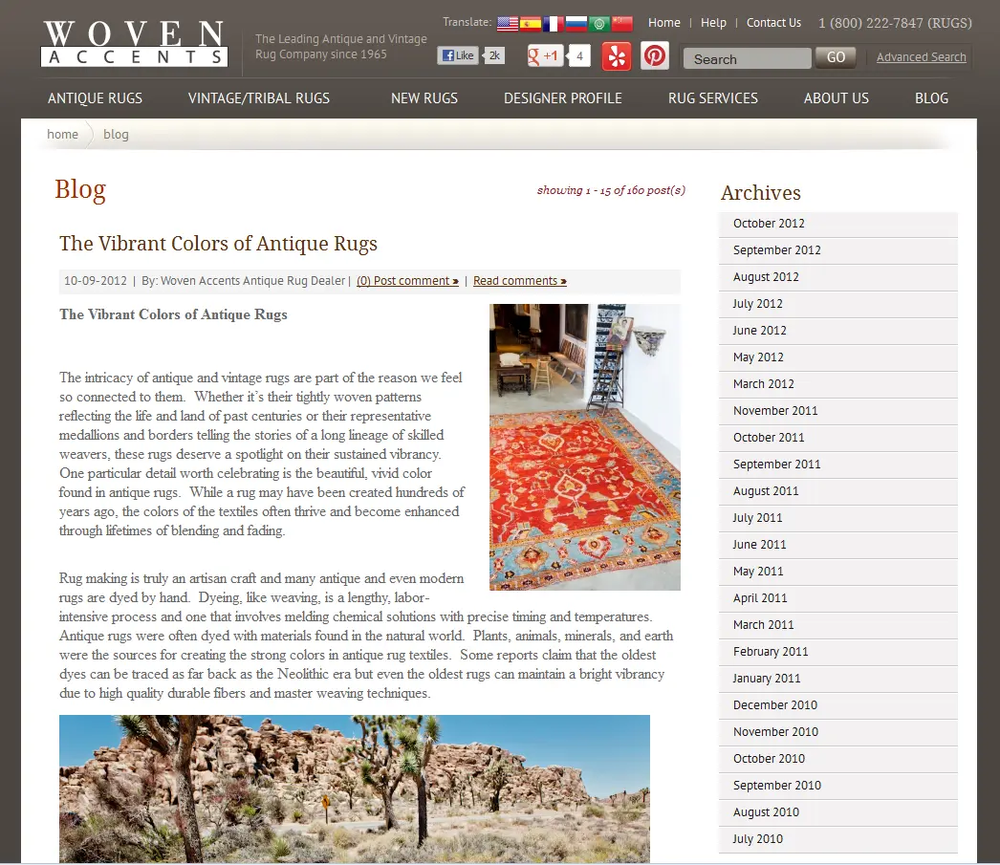
Adrecom's Enterprise Blogging Suite is a powerful engine that provides essential tools for efficiently creating attractive, content-rich blogs that increase your impact and reach. Adrecom’s blogging tools allow you to accommodate multiple authors while synthesizing and organizing their posts, manage and pre-configure social media interaction, pre-schedule posts, categorize posts, efficiently link to related posts, and automatically moderate blog responses.
But, content is still king. What you say and how you say it have everything to do with whether your blog succeeds in its mission. Having the right blogging tools can take your content to another level.
Whether blogging internally to foster idea exchange, knowledge development, and information tracking, or externally to provide readers with relevant current information, blogging form and substance are important to whether your blog is noticed and whether it’s trusted (credible). After all, if your enterprise’s blog isn’t establishing trust and credibility as it disseminates information, what’s the point?
To make your blog worth the effort, and ensure its success, here are some basic enterprise blogging “best practices” to guide you:
- Understand
your audience. Know what they’re looking for. Ask yourself these questions:
- Who is your primary audience for the most part? Who are you trying to reach?
- Why are they reading your blog?
- What do they hope to find?
- Are you delivering what they’re looking for?
- Write in a tone and style that is consistently appropriate for
your audience.
- Understand your purpose. Know what you want to accomplish with your blog. Don’t try to be all things to all people.
- Stay focused on your purpose and your audience in choosing your topics. Your readers will come back again and again if they know they’re likely to find useful ideas written in an honest voice. This consistency generates loyalty and trust, and perceived authority. It also leads to expanded readership.
- Deliver original ideas and exceptional content that have value to your intended audience. If all you do is list links to information created by other, you’ll lose your readers quickly, and you’ll defeat your purpose. When you do provide links, be sure to explain in your own terms why the link you provide is useful, relevant, or important to your audience and the purpose of bringing it to their attention.
- Headlines - Write interesting and attention-getting blog titles (headlines) that accurately depict the blog entry’s content. Also, be sure your headlines are SEO optimized with keywords to the extent feasible, but never use irrelevant keywords in a title just because they’re keywords.
- Author’s Credentials - Identify the blog’s author and appropriate credentials and expertise to show the world who you (or your team) are and what your qualifications are in the blog’s general subject areas. If the author’s credentials are extensive, link to a separate page containing an appropriately extended biography. If you have multiple contributors (authorized bloggers), be sure that they all have uniformly presented and easy-to-find profiles. Letting your readers know who’s behind the material presented enables them to better understand the value and authority of the work.
- Multiple Contributors — If your blog features more than one author, be sure that readers can readily find and view all posts made by a particular author sorted by defined time frames. This enables readers to better understand a particular author’s strengths and focus.
- Contact,
Follow, Share — Provide readers the ability to easily contact the author by
email, an onboard contact form, or by communicating a direct response to a
particular post. This enables readers to get to know the author, provide input,
and build relationships. Also, be sure that your blog’s posts are easily
shareable via highly visible social bookmarking buttons, enable readers to add
"Likes" on Facebook and Google+, and prominently place a link for
readers to subscribe to your blog’s RSS feed or “tell-a-friend.” More
subscribers mean more loyal readers.
Ensure that your blog interface permits readers to submit comments and view comments made by others in real time. This renders the blog far more dynamic while generating useful feedback. Allowing readers to rate blog posts is another useful form of feedback. If you allow comments and ratings, however, be sure your system has an automated moderation feature that filters out spam and abusive responses before live release. - Pleasing
Visual Aesthetics and Page Navigation — Select page colors and fonts
that are easy on the eyes and contrast well, don’t encumber the page with too
many distractions, and keep your page lengths and paragraphs fairly short.
White space helps make the page easier to grasp with a quick scan. If single
blog entries are particularly long, break them into multiple pages to reduce
scroll fatigue.
Also, keep the reader interested and engaged by using multimedia (images, video, audio) within your blog. Be sure to include your site’s standard navigation footer so readers can move easily to and from the blog, and an internal navigation tool for movement within the blog entries and archives. - Don’t overwhelm your readers with too many entries, or underwhelm them with too few. Balance your frequency. Respect your readers’ time and adopt a level of frequency suitable to your audience and the blog’s broad purpose and utility.




